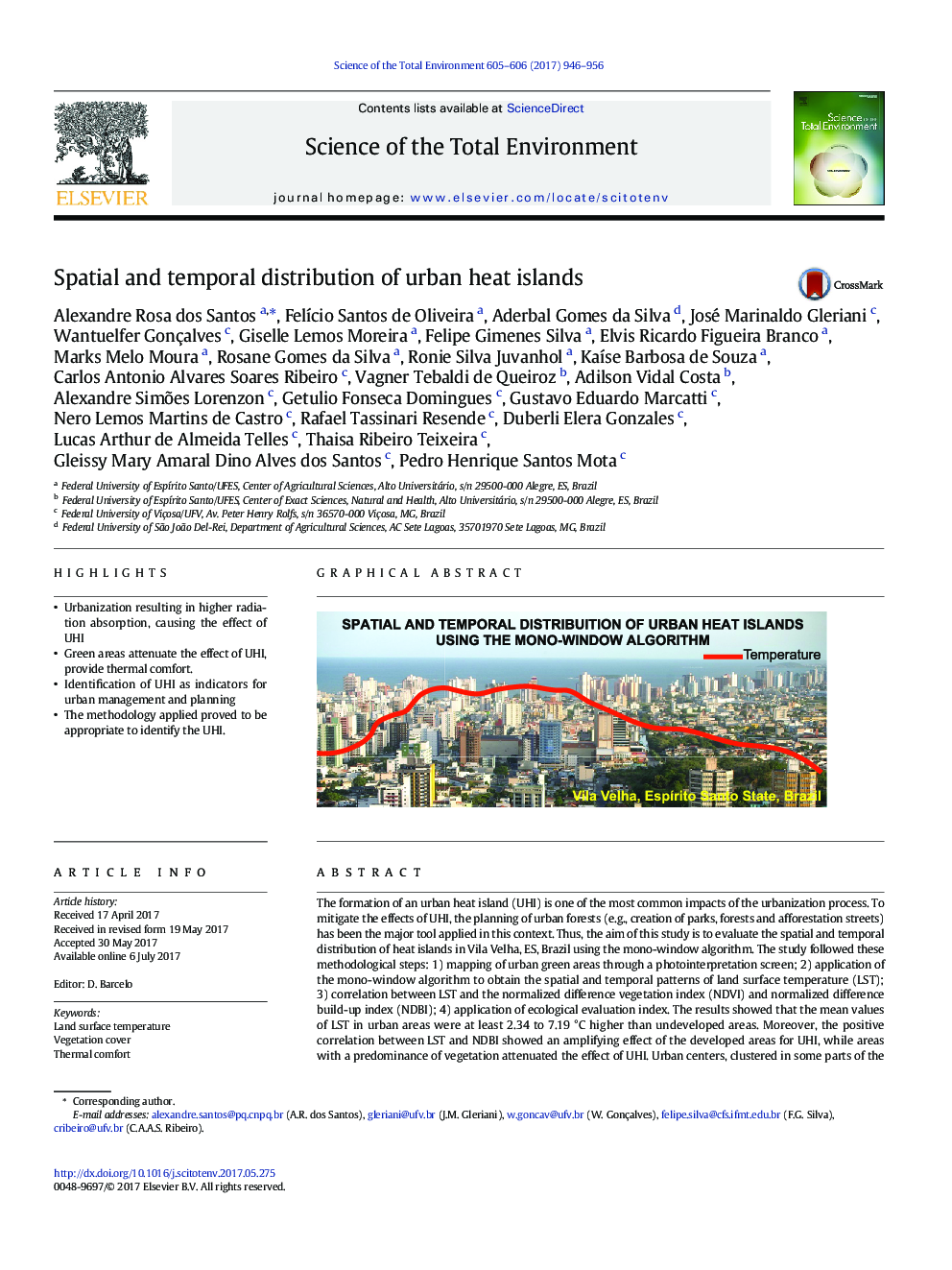| Article ID | Journal | Published Year | Pages | File Type |
|---|---|---|---|---|
| 5750663 | Science of The Total Environment | 2017 | 11 Pages |
â¢Urbanization resulting in higher radiation absorption, causing the effect of UHIâ¢Green areas attenuate the effect of UHI, provide thermal comfort.â¢Identification of UHI as indicators for urban management and planningâ¢The methodology applied proved to be appropriate to identify the UHI.
The formation of an urban heat island (UHI) is one of the most common impacts of the urbanization process. To mitigate the effects of UHI, the planning of urban forests (e.g., creation of parks, forests and afforestation streets) has been the major tool applied in this context. Thus, the aim of this study is to evaluate the spatial and temporal distribution of heat islands in Vila Velha, ES, Brazil using the mono-window algorithm. The study followed these methodological steps: 1) mapping of urban green areas through a photointerpretation screen; 2) application of the mono-window algorithm to obtain the spatial and temporal patterns of land surface temperature (LST); 3) correlation between LST and the normalized difference vegetation index (NDVI) and normalized difference build-up index (NDBI); 4) application of ecological evaluation index. The results showed that the mean values of LST in urban areas were at least 2.34 to 7.19 °C higher than undeveloped areas. Moreover, the positive correlation between LST and NDBI showed an amplifying effect of the developed areas for UHI, while areas with a predominance of vegetation attenuated the effect of UHI. Urban centers, clustered in some parts of the city, received the worst ecological assessment index. Finally, the adoption of measures to guide the urban forest planning within urban centers is necessary to mitigate the effect of heat islands and provide thermal comfort in urban areas.
Graphical abstractDownload high-res image (631KB)Download full-size image
